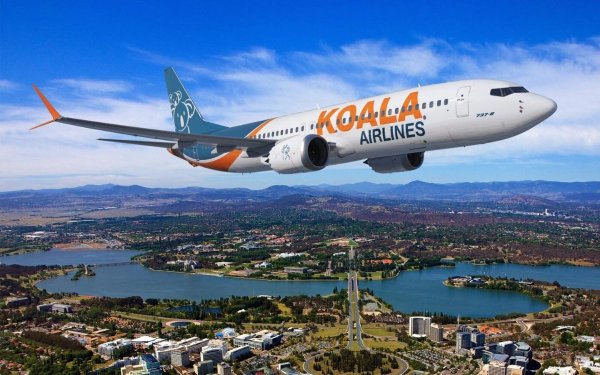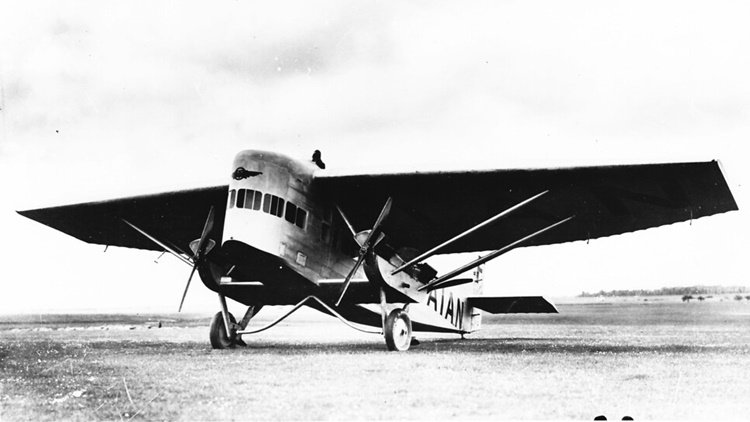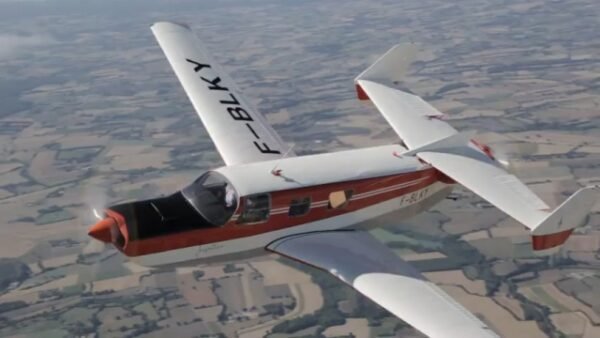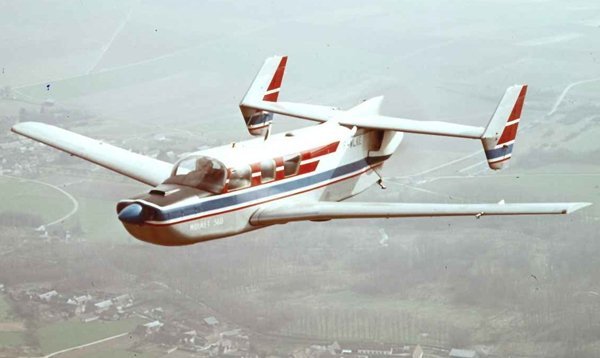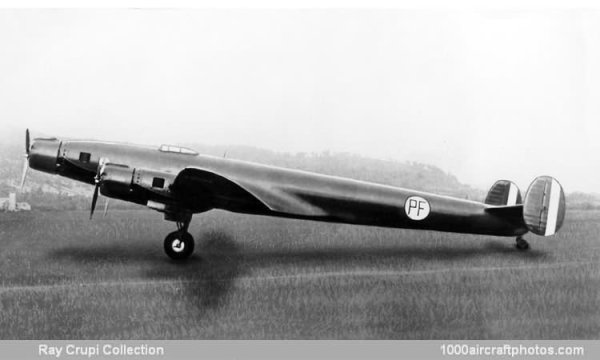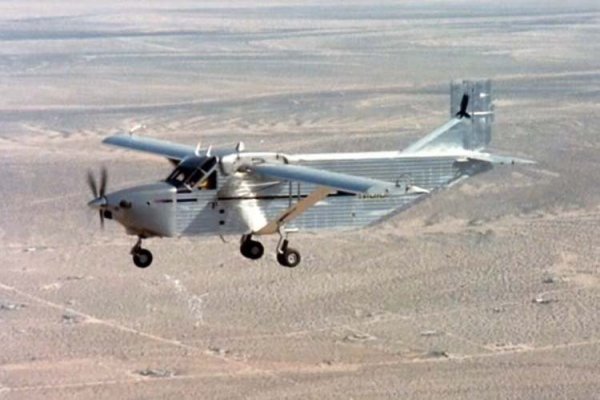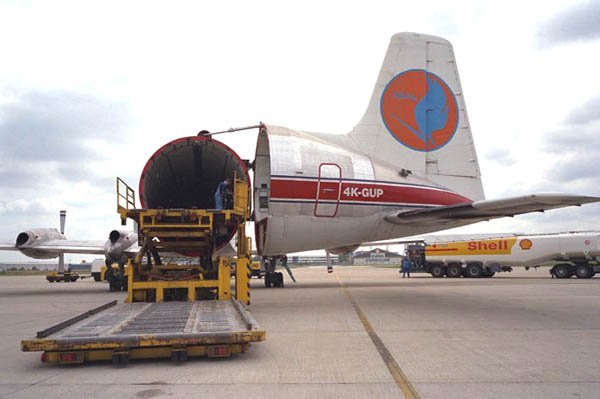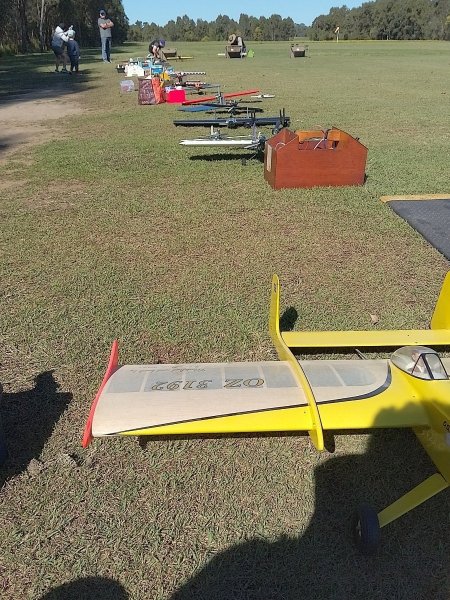-
Posts
7,563 -
Joined
-
Last visited
-
Days Won
67
Content Type
Profiles
Forums
Gallery
Downloads
Blogs
Events
Store
Aircraft
Resources
Tutorials
Articles
Classifieds
Movies
Books
Community Map
Quizzes
Videos Directory
Everything posted by red750
-
The Boeing Model 200 Monomail was an American mail plane of the early 1930s. The aircraft marked a departure from the traditional biplane configuration for a transport aircraft, instead featuring a single, low set, all metal cantilever wing. Retractable landing gear and a streamlined fuselage added to the aerodynamic efficiency of the aircraft. A single example was constructed for evaluation by both Boeing and the US Army (under the designation Y1C-18) but no mass production ensued, and the aircraft eventually joined Boeing's fleet on the San Francisco-Chicago air mail route from July 1931. A second version was developed as the Model 221, with a fuselage stretched by 8 inches (20 cm) that sacrificed some of its cargo capacity to carry six passengers in an enclosed cabin; the single pilot, however, sat in an open cockpit. This version first flew on 18 August 1930. Both the Model 200 and the Model 221 were eventually modified for transcontinental service as the Model 221A, with slight fuselage stretches to give both a cabin for eight passengers. These aircraft were flown on United Air Lines' Cheyenne-Chicago route. The advanced design of the Monomail was hampered by the lack of suitable engine and propeller technology. By the time variable-pitch propellers and more powerful engines were available, the design had been surpassed by multi-engined aircraft, including Boeing's own 247. However, many advancements of the Monomail were incorporated into the designs of the most advanced bomber and fighter aircraft of the early 1930s, the Boeing B-9 and the Model 248 (later developed into the P-26 Peashooter of the USAAC), respectively. Variants Model 200 mailplane (1 built) Model 221 mailplane with capacity for 6 passengers (1 built) Model 221A Model 200 and 221 converted as 8-passenger airliners Model 231 Planned lengthened version of Model 221, not built.
-
We know that, but they are regularly called that to scare the tourists.
-
From Spotter Magazine: Australia never seems to run out of brave entrepreneurs trying their luck in the domestic air travel market. With the demise of Bonza and Rex, enter Koala Airlines. Although few details are known about the Melbourne-based carrier, the proposed airline already has a website up and running, a full management team in place, and the all-important Air Operators Certificate. Koala Airlines is hoping to commence Boeing 737 MAX 8 operations shortly.
-
The Caproni Vizzola C22 Ventura was a light jet-powered aircraft developed in Italy for use as a military trainer. It was of conventional sailplane configuration and bore a family resemblance to the Caproni Calif gliders, although the Ventura had an almost entirely metal structure. The student and instructor sat side by side under an expansive canopy, and weapons hardpoints were provided under each of the slender, high-mounted wings. It had retractable, tricycle undercarriage. In 1981, Agusta acquired 50% of the C22 programme and proposed a new version, the C22R, which was to have been a reconnaissance aircraft also capable of Forward Air Control and ELINT operations. The basic C22J trainer was exhibited at the Farnborough Air Show in 1980 and September 1982, but failed to attract any customers, and the proposed C22R was never actually built.
-
The Farman F.120 were a family of multi-engine monoplane aircraft designed and produced by the French aircraft manufacturer Farman Aviation Works. It was operated in a diverse range of purposes, including as a commercial airliner and as a military bomber aircraft. The F.120, which received the nickname of Jabiru after a Latin American stork, was a fixed-undercarriage monoplane powered by either two, three or four engines, depending on the variant. It featured an unusually broad chord, low aspect-ratio main wing and a relatively deep fuselage. The trimotor variant had the centerline engine mounted high, which gave the aircraft an unusual appearance. During the early 1920s, the Aero Club of France set out numerous rules and regulations for its commercial airplane contest of 1923. Shortly following their issuing, Farman set about the designing of a new commercial aircraft that would, so far as reasonably possible, entirely fulfil these regulations; they had been judged to be of importance of the prospective aircraft's market appeal as various aerial-navigation companies had, formally or otherwise, adopted these regulations as requirements for their own needs. Additionally, the company's design team pursued several other ambitions, including high reliability levels, good onboard comfort levels, favourable flying characteristics, while also being as economically efficient as possible. The F.121 or F.3X was the first version to fly, with four 180 hp Hispano-Suiza 8Ac V8 engines mounted in tandem push-pull pairs mounted on stub wings, however, this arrangement caused cooling problems for the rear engines and the F.120/F.4X version followed shortly afterwards, powered by three 300 hp Salmson Az.9 radial engines. Development continued and a single F.122, modified from an F.4X, was powered by a pair of 400 hp Lorraine 12Db engines. Two military versions were also built, the F.123 with two 450 hp Hispano-Suiza 12Hb V12s, or F.124 with two 420 hp Gnome et Rhône 9Ad Jupiter radial engines. The Farman F.120 was a multi-engine multirole monoplane aircraft. It was relatively well-furnished for the era, being able to routinely conduct night flights via equipment such as searchlights, landing flares, position lights, and general illumination. Various passenger conveniences were present, including individual electric heaters and relatively large glass windows for the passengers to view the landscape below. The electricity, used by the radio set, illumination, and heating, was supplied from wind-driven generators using compact propellers that could be drawn inside the fuselage when not in use. In comparison to most contemporary aircraft, the aircraft possessed greater manoeuvrability, possessed relatively high stability, ease of handling, and was relatively easy to land. Dependent on the variant of the aircraft, as many as four engines could be installed. No significant structural changes were required for those aircraft equipped with a different number of engines, such as the trimotor and twin-engined variants. Mid-flight access to the engine was provided via special doors, permitting inspection and even minor repairs to be performed by the crew. The four-engined model of the aircraft had sufficient power that it could still consistently climb even with a single engine out; even the twin-engined model could maintain stable flight on only a single operational engine. The main fuel tanks were housed within the wing, relatively far from the engines; up to two auxiliary fuel tanks could be installed within the engine nacelles, and would operate independently of the main tanks. The aircraft possessed relatively high fuel efficiency for the era. The F.120 was equipped with a relatively thick wing, possessing a span of 19 m (62.34 ft.) and a chord of 6 m (19.68 ft.) at its centre. Both the thickness and the chord of the wing decrease towards the tips. The supporting framework of the wing was entirely enclosed. Both the spars and struts formed V-shaped girders on either side of the fuselage. The undercarriage consists of two main wheels that were supported by a pair of vertical V-shaped members that joined with oblique steel tubing to connective with the base of the fuselage. The fuselage was internally divided into various sections; the foremost section contained the baggage compartment along with, after which and just forward of the wing, the cockpit. This cockpit provided two seats for its crew, typically comprising one pilot and an assistant. The centre of the fuselage was occupied by the passenger compartment, which had sufficient space for up to 12 passengers to travel on comfortabl e seats even with a central aisle. To the rear of the fuselage was the navigator's room, which was fairly sizable and provisioned with then-modern instrumentation, including a drift meter, compass, radio set, work table and map holder; adjacent to this room was the lavatory. Primary access to the interior was via a single sliding door, while multiple exits were provided across the aircraft to aid in emergency egress. On account of having an entirely unobstructed fuselage base, it was relatively straightforward to convert the aircraft into an armed military configuration, such as that of a bomber or a torpedo plane. Furthermore, its speed and manoeuvrability were sufficient that it could realistically engage in aerial combat despite its carriage of relatively heavy bomb loadouts. The presence of multiple independent engines and its reliability meant that the aircraft could be realistically used over the sea. Despite being most commonly seen in lists of ugliest aircraft, following its first flight in 1923, the F.120 won a French airliner competition, the 1923 Grand Prix des Avions de Transports and its 500,000 francs first prize, before seeing service with several European airlines. The F.120 was capable of carrying up to nine passengers, and served on Farman airline's route Paris-Brussels-Amsterdam, but also with Danish Air Lines between Copenhagen and Amsterdam. They served until the late 1920s. Variants F.120 A single engined biplane bomber, powered by a 280 kW (370 hp) Lorraine 12Da engine. First flown in 1924, only two F.120 bombers were built. F.4X The original designation of the F.120 Jabiru F.120 Jabiru Four transport monoplanes powered by 3x 220 kW (300 hp) Salmson 9AZ water-cooled radial engines. F.3bis A twin engined transport aircraft powered by 2x 300 kW (400 hp) Lorraine 12Db engines, 1 built. F.3X The original designation of the F.121 Jabiru prototype. F.121 Jabiru (Specifications below) Nine transport aircraft powered by 4x 130 kW (180 hp) Hispano-Suiza 8Ac engines, one also modified from a F.120 Jabiru. F.122 A single transport aircraft powered by 2x 300 kW (400 hp) Lorraine 12Db engines. F.123 A single three-seater bomber powered by 2x 300 kW (400 hp) Hispano-Suiza 12Hb engines. F.124 A single three-seater bomber powered by 2x 310 kW (420 hp) Gnome et Rhône 9Ad Jupiter engines. Farman 121 Jabiru (4 engine) Farman 120 Jabiru (3 engine) Farman 123 Bomber (2 engine)
-

a couple of left over b17s after the war.
red750 replied to BrendAn's topic in Aircraft General Discussion
This is a direct link to the aircraft graveyards page: https://planehistoria.com/the-silent-witness-of-air-history-aircraft-graveyards/ -
C5 USAF.mp4 MP4 file sent to me by email. No URL so I couldn't post in Media.
-
- 2
-

-
The Moynet M 360 Jupiter was a small executive transport built in France in the 1960s. It had an unusual twin-push-pull, single-fuselage configuration. Two prototypes were produced, the second with more power and seating, but no sales resulted. Some civil propeller driven aircraft that have used one or more pairs of engines in push-pull configuration have been flying boats, with engines mounted above the wing and clear of spray. Others have had a pair of engines, one at either end of a pod fuselage with a tail unit mounted on a pair of booms, for example the Cessna Skymaster, the Adam A500 or the Rutan Voyager. The Moynet 360 Jupiter was an example of a push-pull aircraft of a less common configuration, where a single conventional fuselage has an engine at either end; the Dornier Do 335 fighter used the same arrangement. For light civil aircraft, the aim was to combine the performance of a conventional twin-engined aircraft with the ease of handling of a single-engined one. The Jupiter was an executive transport with between four and seven seats, depending on engine power. It was designed by André Moynet, a member of the National Assembly of France and a former government minister, while also a test-pilot, and built by S.S. Engins Matra (so it is sometimes referred to as the Matra Moynet Jupiter), the first prototype flying on 17 December 1963 with the designer and Lucien Tieles at the controls. Its wing had a straight trailing edge, but the centre section had strong taper on the leading edge which continued more weakly outboard. It was of two spar, stressed skin construction, carrying mass balanced ailerons and slotted flaps. The main undercarriage legs, placed at the end of the centre section each carried a single wheel and retracted inwards electrically. A retractable nosewheel completed the landing gear. One horizontally opposed Lycoming engine was conventionally placed in the nose. Behind it was a standard cabin, though the front seats were further ahead of the leading edge than usual because of the rearward shift of the centre of gravity caused by the rear engine. There were three large windows on each side. For the same reason the rear fuselage was quite short, and it lacked the normal taper, giving it a boxy look, so that the second, pusher Lycoming could be mounted in the extreme tail. This was cooled by air from rectangular intakes on the upper sides of the rear fuselage. The straight edged, tapered tailplane was mounted on the fuselage top above the engine, with small endplate fins carrying balanced rudders. These fins extended above and below the tailplane, with arrow shaped leading edges and straight, swept trailing edges. There was also a long, shallow strake over the rear fuselage. Seen from below, the long span of the tailplane was striking, about 44% of that of the wings; the elevators filled most of the outer part of its trailing edge, avoiding the propeller airstream. Only two Jupiters were built. The first, designated 360-4 and initially registered as F-WLKE had two 200 hp (150 kW) Lycoming IO-360-A1A engines driving two-bladed propellers and was configured as a 4-5 seater.
-
The Piaggio P.23R, also known as the Piaggio P.123 for propaganda purposes, was an Italian commercial transport aircraft prototype designed and built by Piaggio. Unrelated to Piaggio P.23M. Piaggio designed the P.23R specifically to break speed records for commercial transport aircraft. It was a three-engine low-wing cantilever monoplane with twin tail fins and rudders. The three 671-kilowatt (900-horsepower) Isotta Fraschini Asso ("Ace") XI R V-12 engines were mounted in aerodynamically clean, sleek cowlings and each drove a three-bladed propeller. The fuselage was pencil-shaped. The crew of two sat side by side in separate open cockpits, each protected by a windscreen. The P.23R later was re-engined with three 746-kilowatt (1,001-horsepower) Piaggio P.XI RC.40 radial engines and its landing gear was modified. In addition, both cockpits were enclosed with canopies.
-
The Piaggio P.23M was an Italian commercial transport aircraft prototype designed and built by Piaggio. Piaggio designed the P.23M specifically for flights across the North Atlantic Ocean, intending it to have potential for development as a commercial transport. It was a four-engine shoulder-wing monoplane with inverted gull wings and twin tail fins and rudders. To allow an easier landing if the aircraft had to ditch at sea, its fuselage was designed like a boat hull, which Piaggio termed an avion marin ("marine aviation") design, although the aircraft was not a flying boat. The main landing gear was retractable. The P.23M's four 671 kW (900 hp) Isotta-Fraschini Asso XI R. V-12 engines were mounted on the wings in two tandem pairs, each engine driving a two-bladed propeller; two of the propellers were mounted as pushers and the other two in a tractor configuration. Only one built.
-
The Piaggio P.16 was an Italian heavy bomber designed and built by Piaggio for the Regia Aeronautica (Italian Royal Air Force). The P.16 was a three-engine shoulder-wing monoplane of mostly metal construction, with inverted gull wings. Its wing was thick and semi-elliptical, and its tail was mounted high on the fuselage. It had retractable main landing gear and a spatted, non-retractable tailwheel. In addition to bombs, its armament consisted of four 7.62-millimeter (0.3-inch) machine guns, of which two were mounted in the leading edge of the wing, one in a retractable dorsal turret, and one in the rear of the fuselage beneath the tail. The bombardier (bomb-aimer) manned a compartment set behind the nose engine on the underside of the fuselage. The P.16 first flew in November 1934, and an order for 12 aircraft was placed and then cancelled, with preference given to the Piaggio P.32, which was produced from 1936 to 1939.
-

Piper Archer down SW Sydney 22/08/2024
red750 replied to planedriver's topic in Aircraft Incidents and Accidents
Archers have fixed gear. It's the Arrow with retractables. -
The Victa Aircruiser was a 1960s Australian four-seat touring monoplane designed by Henry Millicer and built by Victa. It was not put into production by Victa, and the rights were sold to AESL in 1969. Following the success of the earlier Airtourer, Millicer designed a four-seat version which he called the Aircruiser. The prototype registered VH-MVR first flew on 18 July 1966. Like the Airtourer it was a low-wing monoplane with a fixed nosewheel landing gear and powered by a 210 hp (157 kW) Continental IO-360-H piston engine. Rather than the sliding clear Perspex canopy of the Airtourer, the four-seat Aircruiser had a fixed cabin roof with a single "car type" door on the left hand side. Although Victa completed certification testing, no production of the Aircruiser followed, as Victa closed down its Aviation Division after failing to get financial assistance from the Australian government. Both Victa and Transavia Corporation had requested subsidies for Australian-designed and -built light aircraft, with Victa seeking a subsidy of up to 60% of the factory cost. Following the sale of the design rights of the Airtourer to Aero Engine Services Limited (AESL) of New Zealand, the rights to the Aircruiser were also sold to AESL in 1969. AESL's Chief Designer Pat Monk re-designed the aircraft as the AESL CT/4 Airtrainer, a fully aerobatic (+6G, -3G) military trainer. In 2013 Brumby Aircraft Australia announced the company had purchased the type certificate for the Victa Aircruiser to be developed into the Brumby Aircruiser.
-
The Grumman F2F was a single-engine, biplane fighter aircraft with retractable undercarriage, serving as the standard fighter for the United States Navy between 1936 and 1940. It was designed for both carrier- and land-based operations. Grumman's success with the two-seat FF-1, which was significantly faster than even the single-seat fighters of its time, resulted in a contract for the single-seat XF2F-1. Armed with two 0.30 in (7.62 mm) machine guns above the cowl, the new design also incorporated watertight compartments to reduce weight and improve survivability in the event of a water landing. The prototype first flew on 18 October 1933, equipped with the experimental 625 hp (466 kW) XR-1534-44 Twin Wasp Junior radial engine, and reached a top speed of 229 mph (369 km/h) at 8,400 ft (2,600 m) – 22 mph (35 km/h) faster than the FF-1 at the same altitude. Maneuverability also proved superior to the earlier two-seat aircraft. The Navy ordered 54 F2F-1 fighters on 17 May 1934, with the first aircraft delivered 19 January 1935.[citation needed] One additional aircraft (BuNo 9997) was ordered to replace one which crashed on 16 March 1935, bringing the total to 55, with the final F2F-1 delivered on 2 August 1935.[citation needed] The F2F-1 had a relatively long service life for the time, serving in front-line squadrons from 1935 to late 1939, when squadrons began to receive the F3F-3 as a replacement. By September 1940, the F2F had been completely replaced in fighter squadrons and was relegated to training and utility duties. The last F2F-1s were stricken from the list of naval aircraft in early 1943. Variants XF2F-1 United States Navy designation for the Grumman Model G-8 prototype with a 625 hp (466 kW) XR-1534-44 Twin Wasp Junior radial engine, one built F2F-1 Production variant with a 700 hp (522 kW) R-1535-72 Twin Wasp Junior radial engine, 55 built.
-
The Hawk GafHawk ("General Aviation Freighter") was a small, turboprop-powered freighter aircraft developed in the United States in the 1980s but which only flew in prototype form. It was designed by Hawk International as a means of transporting drilling equipment in and out of remote locations, and was designed to be simple, rugged, and have good STOL and rough-field performance. The resulting design was a boxy aircraft with a rectangular-section fuselage with a high-set tail and rear loading ramp. The high aspect-ratio wings were high-set and braced with struts. The landing gear was fixed and of tricycle configuration, with the main units having dual wheels. Certification proved elusive, however, and Hawk eventually abandoned the project without building any other examples.
-

Piper Archer down SW Sydney 22/08/2024
red750 replied to planedriver's topic in Aircraft Incidents and Accidents
Observers said he aimed for the trees to avoid school kids. -
A Jetstar passenger has been arrested at Melbourne Airport after forcing open a cabin door and jumping out of the plane. The drama unfolded on Thursday morning just after 10am when flight JQ507 arrived from Sydney. Jetstar confirmed to Yahoo News that the passenger exited the plane by deploying an emergency exit. "We can confirm that a passenger opened the emergency exit door after arrival into Melbourne, which automatically deployed the slide," a spokesperson said. The plane was parked at a boarding gate at the time. The reason behind the man's impulsive act is not currently clear, however, photos show the man clinging to one of the plane's engines before he landed on the tarmac. Ground staff were able to restrain the passenger before the Australian Federal Police intervened. The ground staff have since been praised for their swift response to the incident. "Melbourne Airport is proud of the exceptional response from ground crew, which meant there was no immediate danger to other passengers or airport staff," a spokesperson from Melbourne Airport said. Full report.
-
The Conroy Skymonster (CL-44-0) is a 1960s United States specialized cargo aircraft based on the Canadair CL-44 freighter, with an outsize fuselage. The aircraft was designed by John M. Conroy as a transport aircraft that could be used to ferry three Rolls-Royce RB.211 jet engines from Belfast, Northern Ireland, to Palmdale, California, United States. The engines were to be installed on the Lockheed L-1011 TriStar airliner. The Skymonster was derived from a Canadair CL-44 freighter, in turn a derivative of the Bristol Britannia. It features an enlarged fuselage, like the Aero Spacelines Mini Guppy, which was produced by Jack Conroy's previous company, Aero Spacelines. The conversion was performed outdoors, under covered scaffolding, at the Santa Barbara California airport. The nose section was built using foam covered with fiberglass, while the larger fuselage was constructed using conventional aluminum structure. The Skymonster first flew on 26 November 1969, under the US registration "N447T". The CL-44 from which it had been converted also bore this same registration, and was previously operated by the Flying Tiger Line. Only one prototype was built. Another one was ordered, but the CL-44 on which it was to be based crashed before delivery. In 1970, the prototype was leased by Transmeridian Air Cargo, who gave it the name "Skymonster". Despite its being renamed "Bahamas Trader" later on, the name Skymonster stuck, and it is now commonly known as this. In 1978, it was bought by British Cargo Airlines. In 1982, it went to HeavyLift Cargo Airlines, who re-registered it with the Irish registration EI-BND. The aircraft went into storage in 1993, but was bought by a leasing company only two months later and leased to Buffalo Airways. According to Mikey McBryan General Manager for Buffalo Airways in Yellowknife Canada, this Buffalo Airways was a different operator and had no connection to the Canadian company. Its next lease was to Azerbaijan Airlines in 1997, under the registration 4K-GUP. In March 1998, it was leased to Baku Express. In August 1998 it went to First International Airlines and was registered 9G-LCA. In 1999, it was placed into storage, initially in the US, but then it was flown to Bournemouth Airport, UK, where it was scheduled to be scrapped. In December 2006 the aircraft was registered in the Philippines (RP-C8023) and was being prepared for service in Australia.[3] As of March 2008, the Skymonster was still at Hurn. In August 2008, it was reported that the aircraft was in the process of being scrapped, however as of September this was on hold amid further rumours about donation to a museum in Germany. On 14 January 2010, Bournemouth International Airport Limited offered the aircraft for sale in The London Gazette. After a long period of storage, activity was again seen around the Skymonster during the summer of 2013. In July 2013 it was registered N447FT in the United States to a Jordan Harlan Wayne, but has since been deregistered. As of 21 May 2021 the Skymonster remains at Bournemouth International Airport, moved from its original parking spot to make way for airport development.
-
If you are using Windows, open the photo (say, Xxxxx) in Paint and click the rotate option, select left or right as required and Save As and label as Xxxxx 1.jpg. I use a photo editor, but the result is the same.
-
-
Dornier Do K3 Crew: two Capacity: ten Length: 16.65 m (54 ft 7.5 in) Wingspan: 25 m (82 ft 0.25 in) Height: 4.55 m (14 ft 11.25 in) Wing area: 89 m2 (958.02 sq ft) Empty weight: 4,265 kg (9,403 lb) Gross weight: 6,200 kg (13,669 lb) Powerplant: 4 × Walter Castor radial piston engine , 227 kW (305 hp) each Performance Maximum speed: 230 km/h (143 mph, 124 kn) Range: 800 km (497 mi, 432 nmi)
-
The Dornier Do K was a German commercial passenger and freight monoplane, designed by Claude Dornier and built by Dornier Flugzeugwerke. Only three prototypes of different designs were built and the type was not a commercial success. Do K1 The first Dornier Do K was the K1 which first flew on 7 May 1929. The K1 was a conventionally-braced high-wing monoplane, powered by a single nose-mounted 510 hp (380 kW) licence-built Bristol Jupiter VI radial engine, and had a conventional landing gear with a tailskid. The square-section fuselage had an enclosed cockpit for two with a cabin behind for freight or eight passengers. Test flights showed that performance was poor and the aircraft was redesigned. Do K2 The Do K2 flew in December 1929 with similar wings and fuselage but had a changed landing gear and four 240 hp (179 kW) Gnome-Rhone Titan radial engines. The four engines were strut mounted on each side of the fuselage in tandem pairs, one in tractor configuration and the other as a pusher. Although the aircraft had an increase in available power, the performance was little improved on the K1. Do K3 The K3 was a complete rethink of the design. The braced wing was replaced with a cantilever wing of larger span. The fuselage was changed to oval and stretched for two extra passengers and the tailskid was replaced with a tailwheel and the main units were enclosed in fairings. The four engines were in the same tandem arrangement as the K2, but located lower on the fuselage and changed to 305 hp (227 kW) Walter Castor radial engines. The performance was greatly improved but still provoked little interest and no others were built.
-
Ligeti Stratos Further to page 6 entry, Powerplant: 1 × König SD 570 4 cylinder, 2 stroke, 21 kW (28 hp) Maximum speed: 200 km/h (120 mph, 110 kn) Cruise speed: 97 km/h (60 mph, 52 kn) Stall speed: 58 km/h (36 mph, 31 kn) Never exceed speed: 270 km/h (170 mph, 150 kn)
-
Otto Celera 500L Cruise speed: 400 kn (460 mph, 740 km/h) estimated minimum Range: 4,500 nmi (5,200 mi, 8,300 km) Service ceiling: 30,000 ft (9,100 m) Maximum glide ratio: 22:1
-
Scaled Composites Model 81 Catbird Maximum speed: 238 kn (274 mph, 441 km/h) Cruise speed: 218 kn (251 mph, 404 km/h) Rate of climb: 2,000 ft/min (10 m/s)




